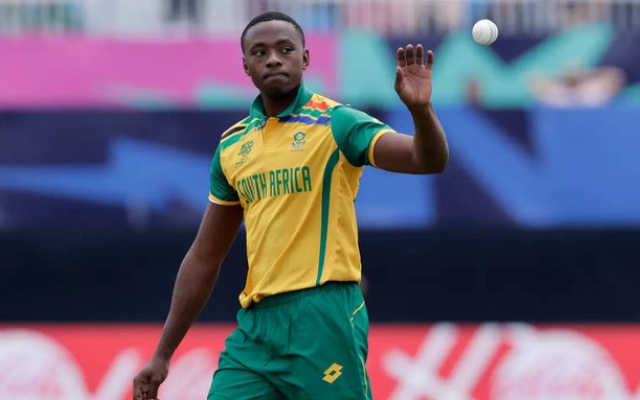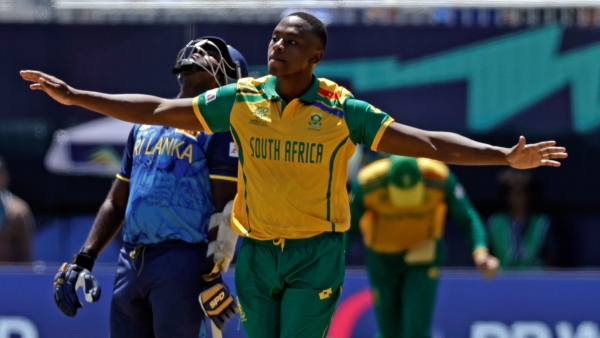
Long before Kagiso Rabada had even played for South Africa, Makhaya Ntini retired with more than 650 international wickets to his name – 390 of them in Tests. Why, then, is Rabada reaching 300 in Dhaka against Bangladesh considered such a significant milestone? Is it just his stellar, matchless, numbers, or are there deeper, underlying social reasons?
The figures alone are eye-popping. It took Rabada just 11,817 balls to get to the landmark. Waqar Younis, the next-quickest, needed 12,602. His strike-rate of 39.2 is comfortably the best of anyone in the 300-club, clear of titans like Malcolm Marshall, Waqar and his own countrymen – Dale Steyn and Allan Donald.
There is always a tendency to run down present-day achievements by pinpointing the lack of quality of the opposition. After all, Rabada’s 300th came against Bangladesh, hardly contenders to win the World Test Championship. But dig a little deeper, and you’ll see that Rabada has been exceptional against the very best.
Of his 65 Tsts, as many as 36 have been against Australia, India and England. He has taken 170 of his wickets against them. Only in India, and that too on pitches tailor-made for spin, has he struggled, taking just nine wickets in six Tests.
But to dwell too long on the numbers is to miss the significance of what Rabada has achieved. In his own way, he has been as much an agent of transformation as Siya Kolisi, the much-lauded captain who lifted back-to-back World Cups with Rugby Union’s Springboks.
Ntini was a pioneer but was never viewed as the main man. In the early part of his career, Donald and Shaun Pollock carried the bowling standard. By the time he finished up, Steyn and Morne Morkel were the chosen pair. Ntini’s boundless positivity kept him going nearly a decade-and-a-half, but he could never forget how he was shunned as a ‘quota player’ on his bad days.
“That environment was just bad,” said Lungile ‘Loots’ Bosman, in an interview with ESPN Cricinfo a few years ago. “You could just see those guys don’t want us [players of colour] to play there. They couldn’t hide it. It was painful to be there. There was no chance we were going to win the World Cup in that environment.”
Bosman played for South Africa nearly five years, and spent much of that period feeling excluded from the larger group. According to Gordon Templeton, South Africa’s media manager during the 2007 World Cup, Rabada’s journey has been no less arduous.

“Let’s not forget that was major resistance to him being promoted from the Under-19 level,” said Templeton, who also served as chairman of the historic Soweto Cricket Club between 2011 and 2013. “That came from the oppressors, who argued that Kagiso still needed to spend more time in franchise cricket. And yet, two years after his debut, he was the No.1-ranked Test bowler in the world.”
Unlike Ntini, Rabada is clearly first among equals. The support cast around him has changed frequently, but he is the unquestioned leader of the pack. And that matters. “Kids of colour in this country can now relate to somebody that is closer to their age, someone whose career many of them have grown up with, and who has the same pigmentation as they do,” said Templeton. “He is a true role model in his lifestyle and everything else he does. In his chosen career, he’s performing way above all others.”
After a rough patch either side of the Covid-19 hiatus, Rabada has been back to his lethal self in the red-ball format. But so dramatically has the cricket landscape changed that he may never get to 500. In the first four full years of his career, Rabada played 38 Tests. In nearly half a decade since – admittedly including the Covid break – he has just 24 caps. South Africa, like many other cricket boards without deep pockets, increasingly prioritise the white-ball formats when drawing up their itineraries.
For now, though, we should just enjoy that fluid, athletic run-up and the menace and skill that’s unleashed as he runs through the crease. “That he has got 300 Test wickets in such a short space of time reminds our youngsters what is possible,” said Templeton. “Yes, it’s going to be a struggle. The oppressors are not necessarily Caucasian. They’re often our own black brothers and sisters.
“It’s a milestone second to none. It creates belief and is inspiring for any aspiring cricketer. Kagiso is living proof of that, despite all challenges, anything can be achieved.”
For More Sports Related Content Click Here




